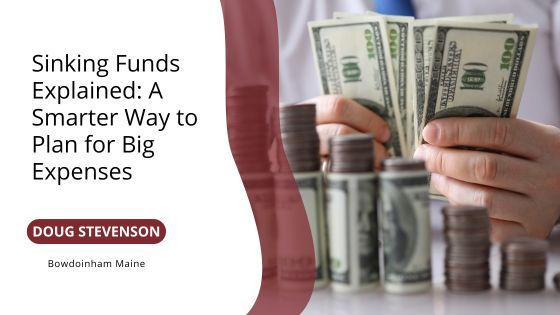A sinking fund is a financial strategy where you set aside a small amount of money regularly to prepare for a future expense. Unlike an emergency fund, which covers unexpected costs, a sinking fund is meant for planned, often large, purchases. Think of it as proactive saving instead of reactive spending. Whether it is for a vacation, home repairs, holiday gifts, or a new car, sinking funds allow you to pay for these items without disrupting your regular budget or going into debt.
How Sinking Funds Work
The concept is simple. You choose a specific goal, determine the total cost, and divide it by the number of months you have until the expense occurs. For example, if you want to spend 1,200 dollars on a vacation in twelve months, you would save 100 dollars per month. The money should be kept in a separate account so it does not get mixed in with your everyday spending. This keeps your savings organized and purposeful.
Why Sinking Funds Are So Effective
Sinking funds prevent financial stress by eliminating the need to come up with large sums of money at the last minute. They also reduce the temptation to use credit cards or dip into your emergency savings. By spreading the cost over several months, sinking funds help you stay in control of your finances. They turn big expenses into manageable, bite-sized goals and can be adjusted at any time based on changing priorities.
Common Categories for Sinking Funds
There are endless possibilities for how to use sinking funds, but some of the most common include
-
Travel and vacations
-
Medical expenses not covered by insurance
-
Car maintenance and repairs
-
Annual insurance premiums
-
Holiday shopping and gifts
-
Home improvement projects
-
School tuition or back-to-school costs
You can have multiple sinking funds at once, each labeled and tracked separately. Some people manage this with a spreadsheet, while others use budgeting apps or multiple savings accounts.
Where to Keep Your Sinking Fund
The best place to keep a sinking fund is in a high-yield savings account. This keeps your money safe, accessible, and earning a bit of interest. You want it to be separate from your main checking account so you are not tempted to spend it, but still liquid enough to use when the time comes. For short-term goals, savings is better than investing since market fluctuations could affect your balance when you need it most.
How to Get Started
Start by identifying one or two big expenses coming up in the next six to twelve months. Estimate the total cost, divide it by the number of months until the due date, and set up automatic transfers to a dedicated account. Once you see how easy and helpful this approach is, you can expand it to more areas of your life.
Conclusion
Sinking funds are a simple but powerful tool for staying ahead of your finances. They help you avoid debt, plan with confidence, and handle large expenses without surprise or stress. By setting aside small amounts regularly, you build financial resilience and gain more control over your money.

